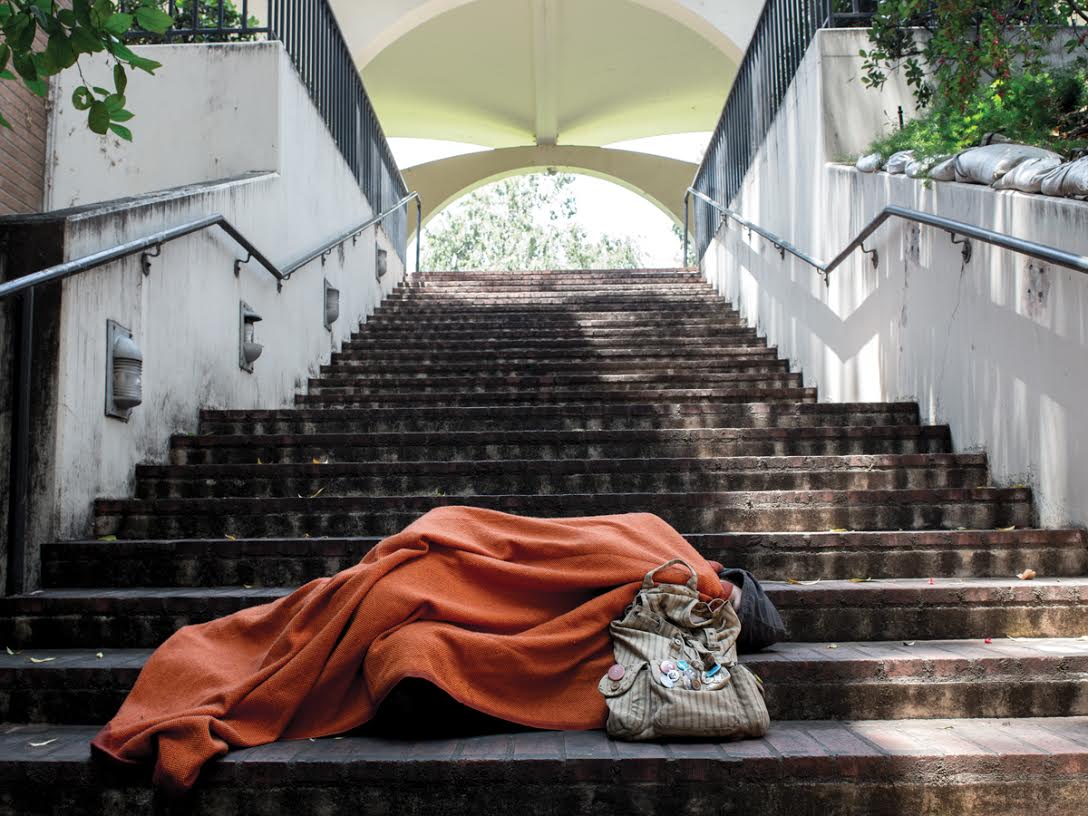
Last April, California State University, Long Beach announced it will initiate a research project aimed to discover how CSU “campuses identify and serve students experiencing food and housing instability.” Since the 2008 recession hit the nation, tuition in the CSUs and UCs have been rising, causing students to be in precarious monetary situations as they pursue an education. Many students face problems including home insecurity. Though 47,000 students identified as homeless on financial aid applications in 2010, there is currently no way to keep track of the actual number of homeless students. Rashda Crutchfield, the lead conductor of the study, explains that “students who experience homelessness are not required to identify themselves and because of the stigma associated with homelessness, they purposefully hide their circumstances”
This stigma is real and, at times, frightening. Facing not only violence, the homeless are unfairly labeled with stereotypical traits, such as being lazy, not wanting a job and becoming the butt-end of jokes, as they are often seen as an excessive burden. Due to this stigma, many are not aware of student homelessness, since these students do not feel comfortable speaking up about their living conditions — however, there are some who have. Diego Sepulveda, a former student at UCLA, described his personal struggles with obtaining an education while living in part-time homes from the UCLA library, friends’ couches and UCLA’s Student Activities Center. Due to losing his part-time job, Sepulveda had to face this situation. There are other students like Sepulveda who are not at fault for being homeless, despite the stigma stating it’s the homeless person’s fault for their living conditions and not other circumstances. These sentiments toward homelessness and the lack of awareness on student homelessness must change with universities taking active roles in this movement — especially UCR.
As a university that serves many students of various economic backgrounds, UCR should devote resources and efforts toward building awareness of homelessness. Back in 2012, UCR hosted a Women In Leadership Speaker Series that was free to the public with the final speaker of the series being Carissa Phelps, an advocate for homeless and transitional age youth. Bringing in speakers like Phelps would be beneficial in spreading awareness of homelessness, since she has personal experience living on the streets, providing an inspirational figure that students can look up to. Along the same lines, the university can host a speaker series or workshops specifically on homelessness by either offering more opportunities to hear personal narratives or lessons on how to deal with the situation, such as what resources students have access to or information on Riverside’s current housing laws (knowing our city’s housing ordinance laws is one).
UCR can also further encourage student organizations to focus on homelessness via volunteering within the local community, fundraising for food and related necessities or educating their peers on the issue. While there are some student clubs that target issues relating to homelessness, such as poverty or food scarcity, there are few clubs that focus on or even know about student homelessness. To encourage student organizations to do so, UCR can hold initiatives to sponsor clubs to aim part of its efforts toward student homelessness.
After spreading awareness, UCR must attempt to track the number of homeless students in order to help these students and fight the stigma against the issue. If the university is to pursue this, then it must express that they are doing it for the students’ own benefit and not to report them to law enforcement. The tracking can take the form of a short survey accessible on GROWL, since all UCR students must use the site. Said survey should not consist of comprehensive questions, but short questions that allow the university to easily gain statistics, such as “are you currently homeless or have you been homeless in the past year?” or “are you are risk of becoming homeless?” Though this survey can be given out once a school year, there can be a function on GROWL that allows student to notify UCR if their housing situations change.
After gathering statistics or identifying homeless students, UCR can address the issue by offering opportunities and resources to these students to make sure that they are not at further risk. One opportunity the university can offer is new housing—and not the expensive Glen Mor 2 housing. UCR needs to provide cheaper accommodations close to campus that are affordable for all students. Currently, UCR has cheap accommodations in the form of some campus apartments (Bannockburn, Oban) and Canyon Crest Family Student Housing, however it has not created affordable housing for a number of years with its last projects being the Pentland dorms and Glen Mor 2. The university must steer away from such plans if it wishes to promote student home security. In addition to cheaper housing, UCR can initiate emergency housing programs to temporarily help at-risk students by utilizing open on campus housing.
Beyond providing housing, UCR can offer scholarships to only be used for room and board on or near campus. Such scholarships can be based on academic merit to need basis, but will ultimately be used to provide students the chance to receive funding for housing. Also, this will be beneficial for UCR due to the scholarship money going straight back to the school, since it is used to pay for on-campus housing.
While UCR is striving toward solving students’ home and food security issues via creating the R’Pantry or ASUCR talking to the dean of students, the university can do more to solve these issues. In a time where living expenses are only increasing, UCR can develop critical strategies to combat student homelessness and it can start by tracking homeless students.








